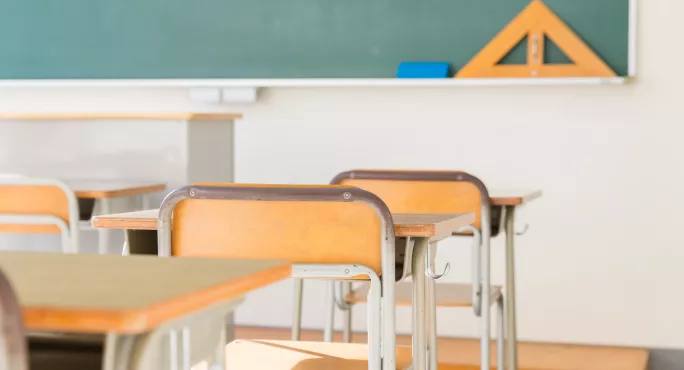Teachers ‘unable to work’ due to lack of Covid tests

Teachers have been unable to attend work due to a lack of lateral flow and PCR Covid tests, according to a survey published today.
Headteachers’ leaders have called for immediate action from the government after one in 12 (8 per cent) of the teachers surveyed said that colleagues had been unable to go into school last week because of a lack of Covid tests. A similar proportion reported classes being taught together because of staff absences.
The data, published today by the Sutton Trust with Teacher Tapp, also shows that state schools, particularly those in disadvantaged areas, are more likely to be hit by Covid absences than those in the independent sector.
- Covid: Nearly one in four teachers say absence having major impact
- DfE: Schools to get ‘advisers’ to tackle persistent absence
- Omicron: Schools ‘teetering on the edge’ over Covid absence
The figures show that teachers in the state sector were around twice as likely to report 10 per cent or more of their colleagues being absent because of Covid last week.
Meanwhile, teachers in the most deprived state schools were almost three times more likely than those in private schools to report this being the case.
Geoff Barton, general secretary of the Association of School and College Leaders, said it was “very frustrating” that staff have been unable to work because of lack of access to Covid tests and that “it is essential that the government ensures that there are adequate supplies of tests available”.
The survey also revealed that a fifth of school teachers reported that more than 10 per cent of their isolating pupils still don’t have access to devices for remote learning, a figure that almost doubles in the most deprived schools.
Mr Barton added: “It also beggars belief that, almost two years on from the first lockdown, there are still many schools, most notably those in areas of deprivation, that do not have access to the devices their students need to be able to study at home.
“The government made great play of its efforts to provide laptops to schools last year, but it seems it did not see the job through. The use of technology in education has been one of the few positives to come from the pandemic, but it is of little use if young people cannot access lessons when they are self-isolating.
“This report provides further evidence that the impact of the pandemic follows socioeconomic lines, with those most severely impacted being disadvantaged young people. The government needs to urgently address the serious issues raised by the Sutton Trust.”
Paul Whiteman, general secretary of the NAHT school leaders’ union, said that the figures showing schools in the most deprived areas were suffering worst were particularly concerning.
“Children from more deprived backgrounds have had it the toughest during the pandemic and need the most help now, so if there’s some reason they’re being disproportionately impacted by staff absence, that needs to be urgently looked at,” he said.
Schools in North West worst hit
School teachers in the North West of England reported the highest levels of absences, followed by Yorkshire and the North East.
Across the country, roughly 4 per cent of the teachers responding to the survey were isolating due to Covid on 10 January.
Teacher Tapp surveyed up to 6,964 teachers in schools across England between 7 and 10 January 2022.
Sir Peter Lampl, founder and chair of the Sutton Trust and chair of the Education Endowment Foundation, said: “We must do all we can to ensure that poorer pupils are not further disadvantaged as a result of this disruption.”
He added that as pupils move to remote learning, “all pupils must have the resources they need to learn from home”.
“The most important thing for the government to do is to strengthen existing education recovery and make sure sufficient funding is being provided to cover absent staff.”
In response to the survey, a Department for Education spokesperson said: “School staff are working tirelessly to ensure classrooms are safe, and it is thanks to their efforts that 99.9 per cent of schools are open once again and millions of pupils have returned to face-to-face learning after the Christmas break.
“We are supporting schools through encouraging former teachers to come back to classrooms and extending the Covid workforce fund for schools that are facing the greatest staffing and funding pressures.
“We’ve also asked schools to have contingency plans to maximise attendance and minimise disruption to learning, should they have high rates of staff absence, and are working with the sector to share case studies of flexible learning models to support the development of those plans.”
A poll released earlier this week by the NASUWT teaching union revealed that nearly one in four teachers said absence was having a major impact, while the NAHT said that staff were ”teetering on the edge” because of the impact of Covid.
You need a Tes subscription to read this article
Subscribe now to read this article and get other subscriber-only content:
- Unlimited access to all Tes magazine content
- Exclusive subscriber-only stories
- Award-winning email newsletters
Already a subscriber? Log in
You need a subscription to read this article
Subscribe now to read this article and get other subscriber-only content, including:
- Unlimited access to all Tes magazine content
- Exclusive subscriber-only stories
- Award-winning email newsletters
topics in this article



